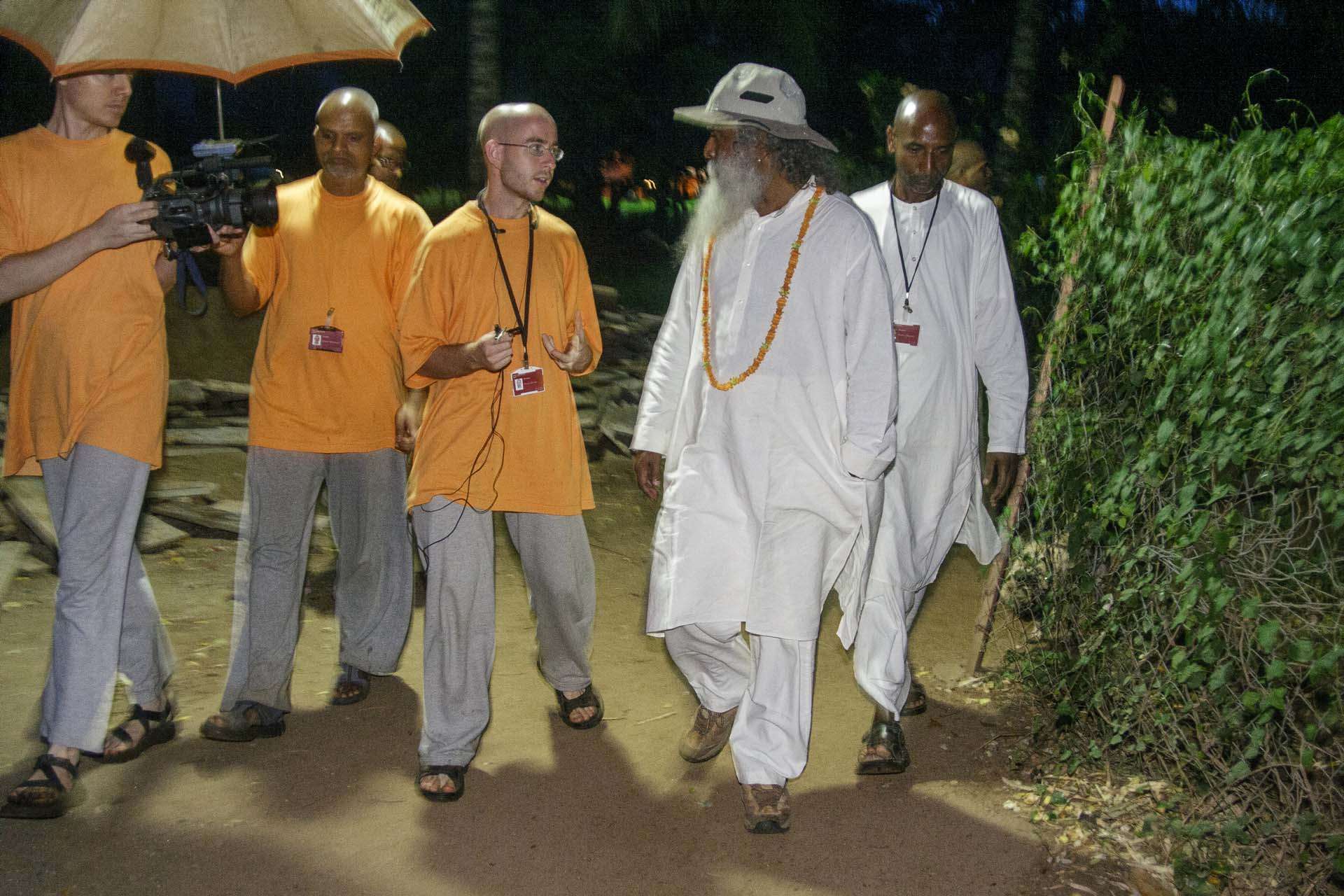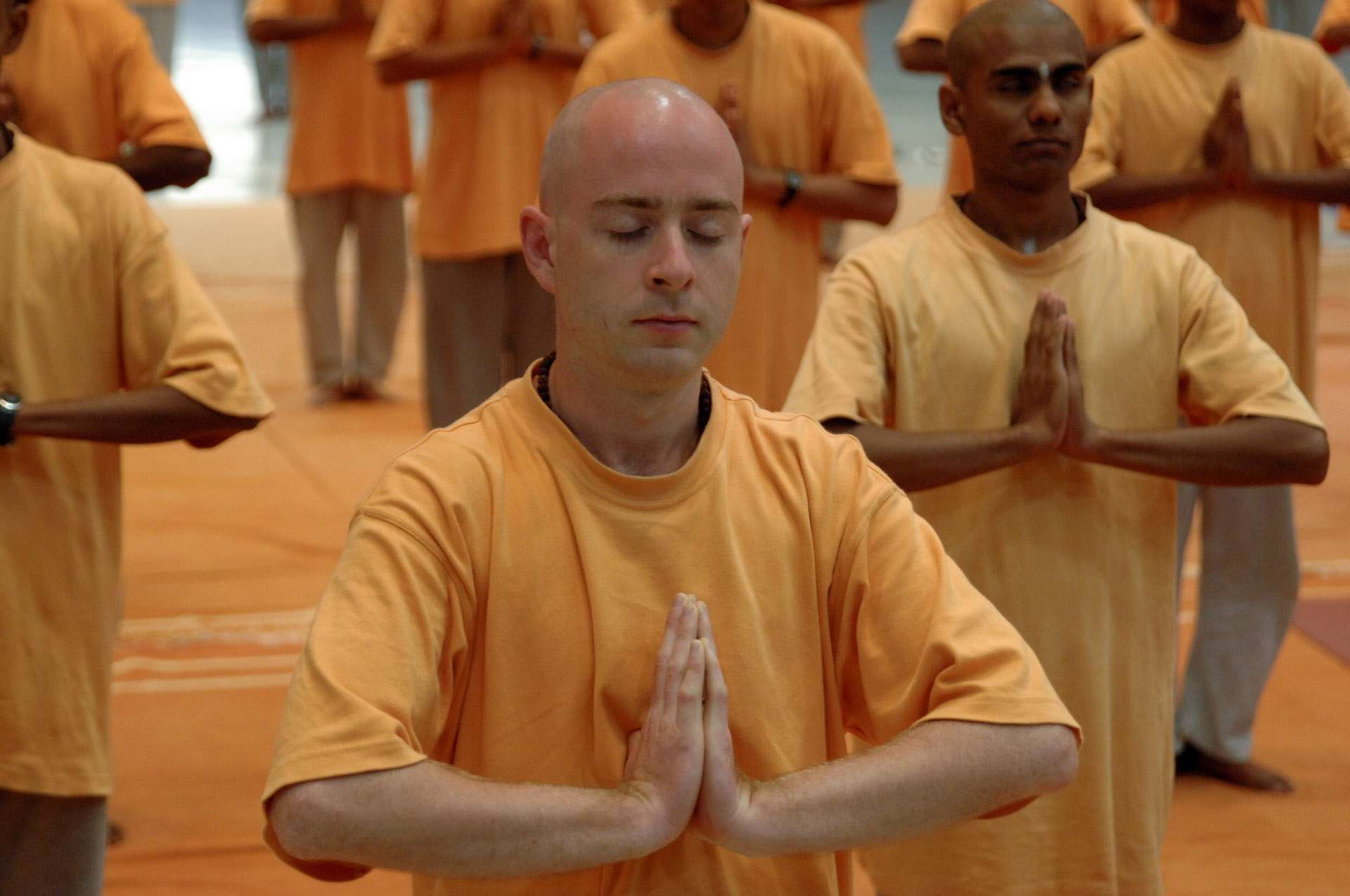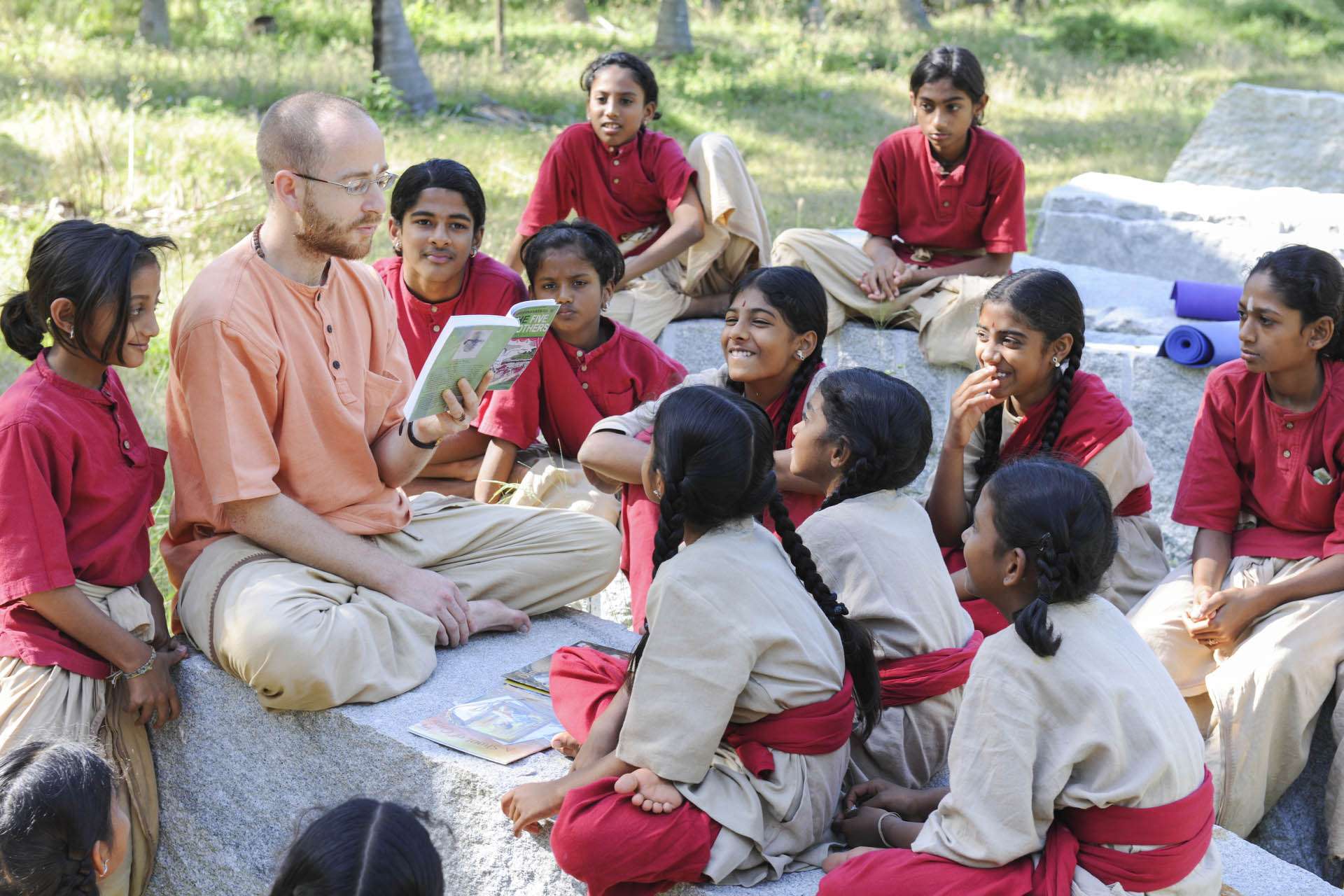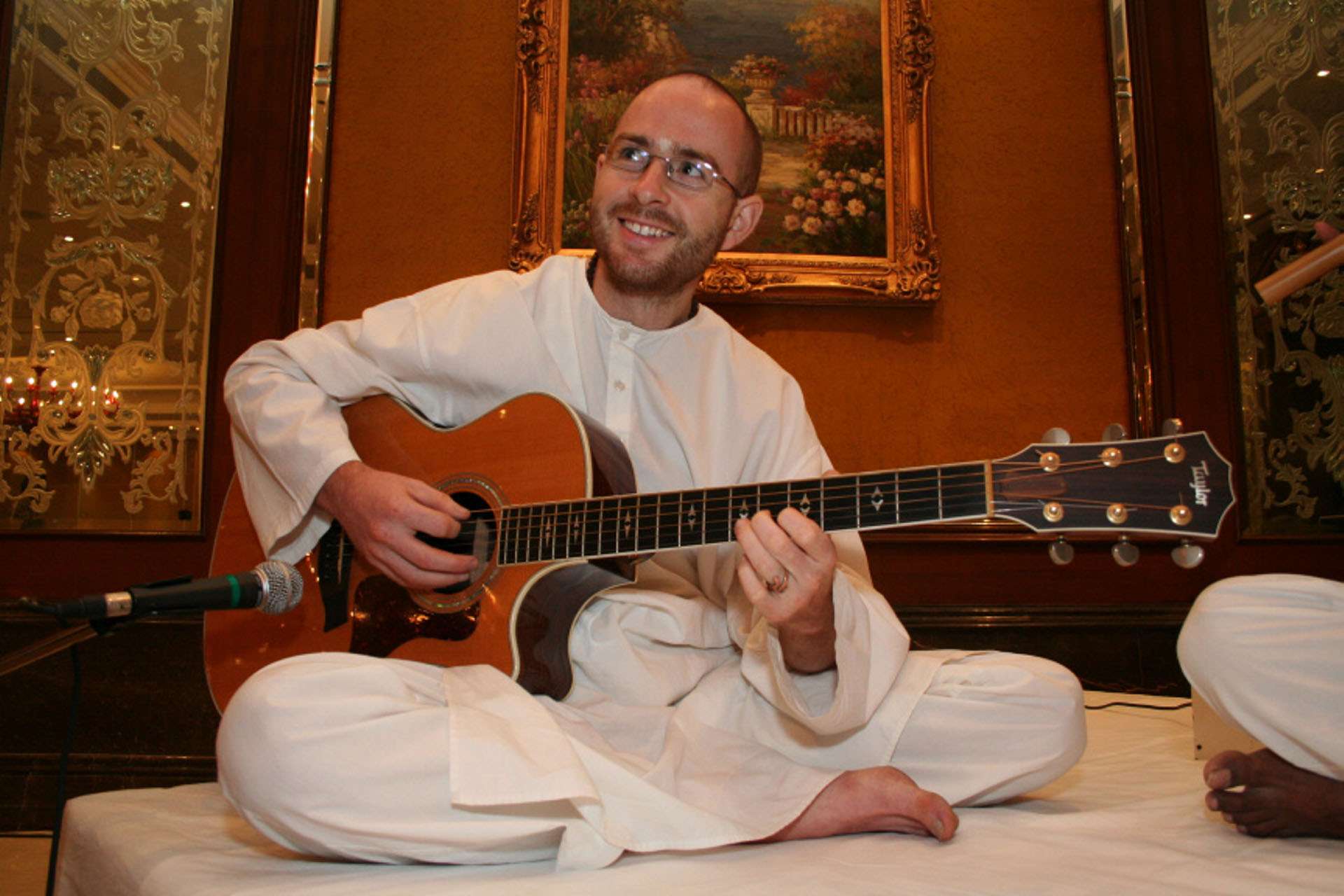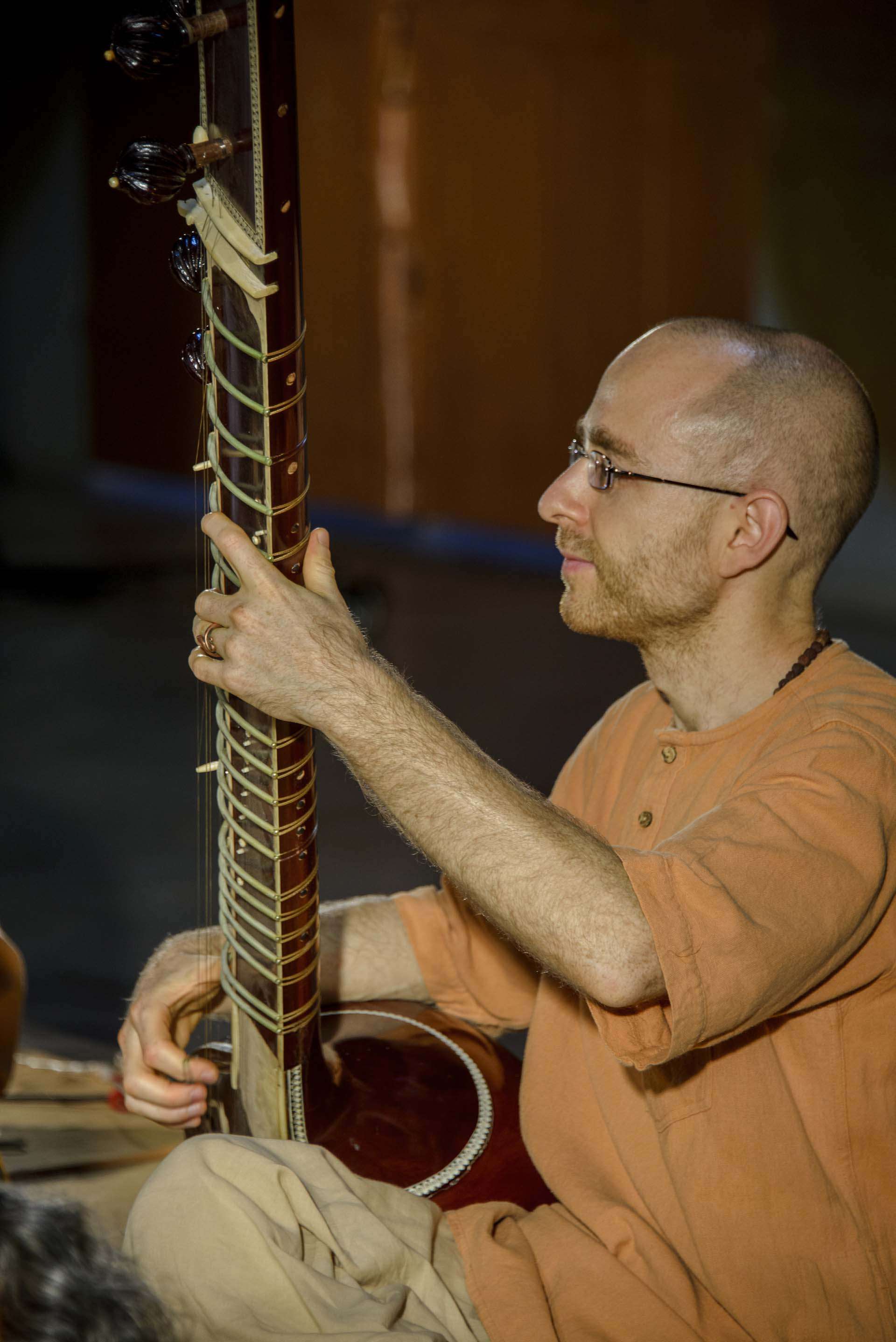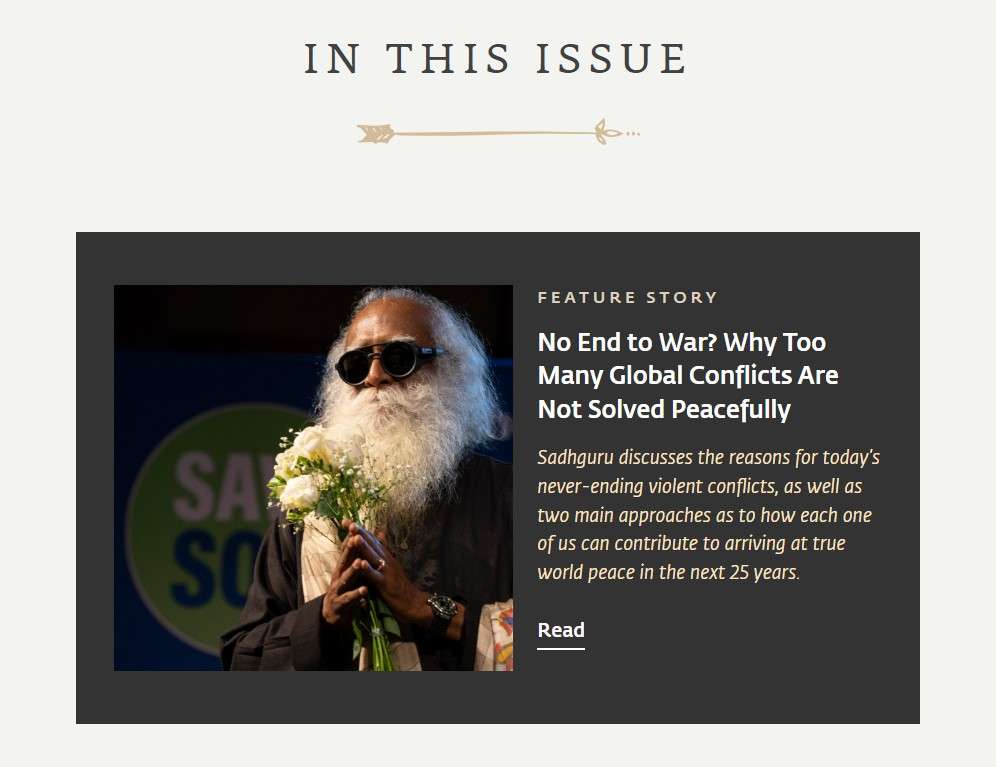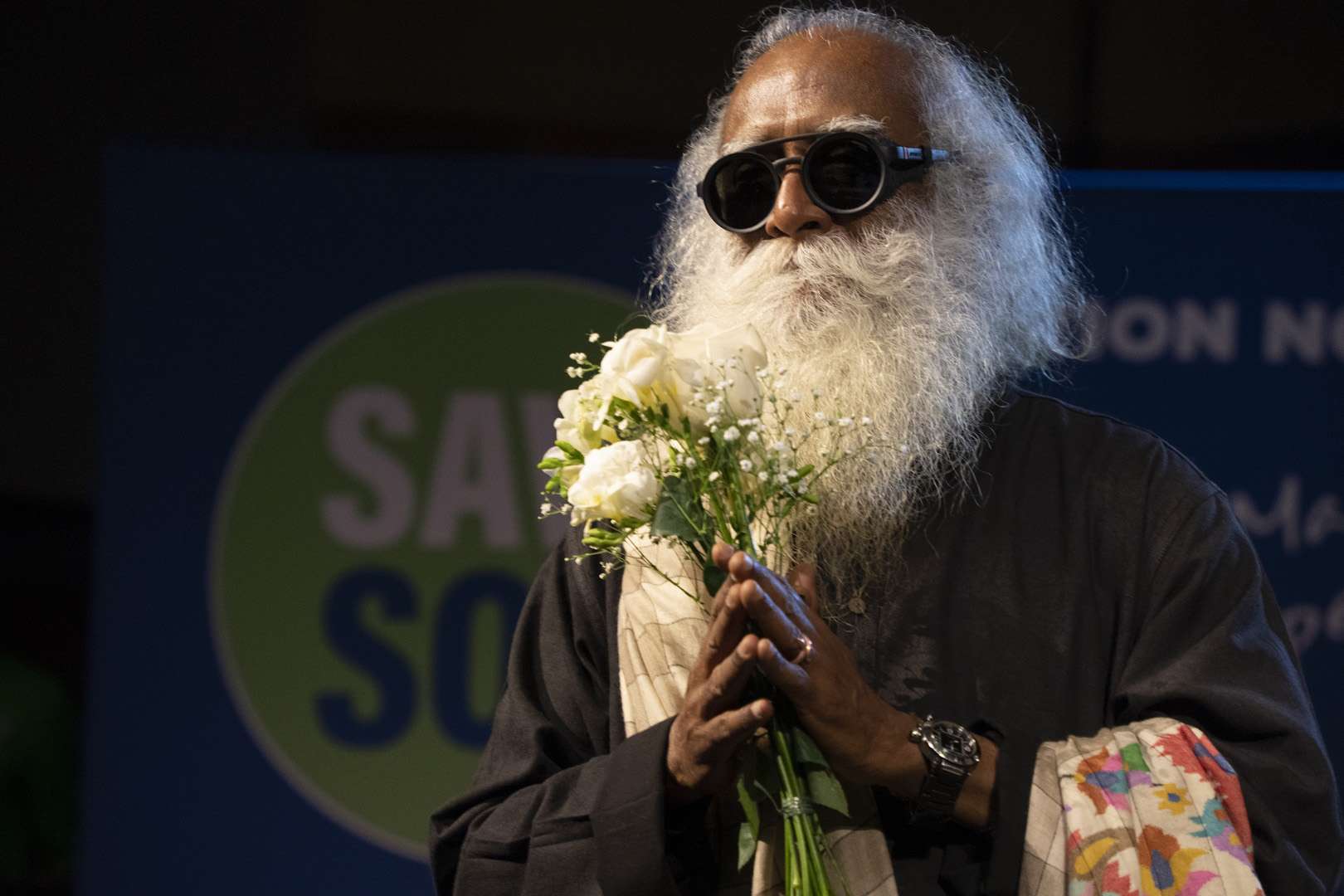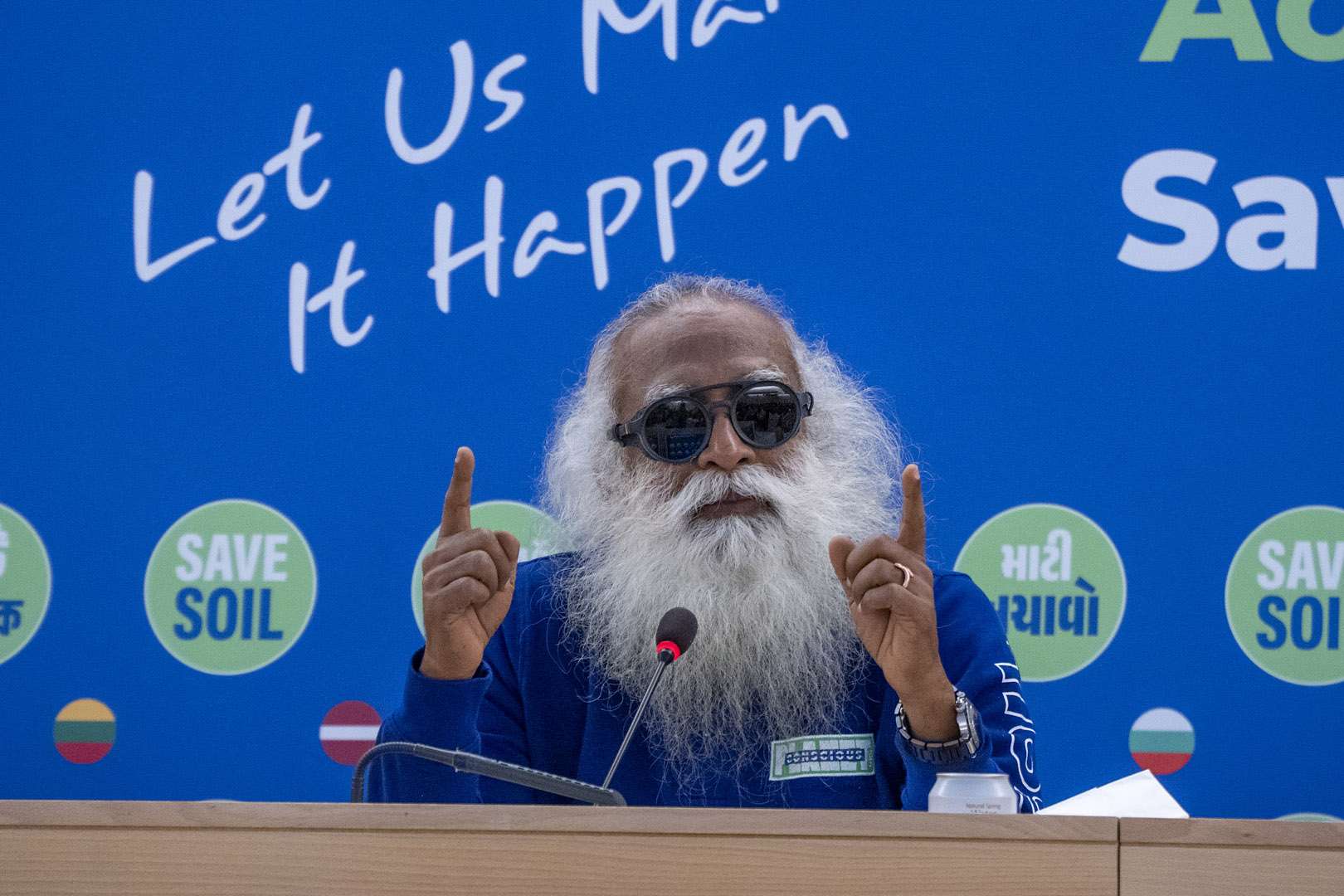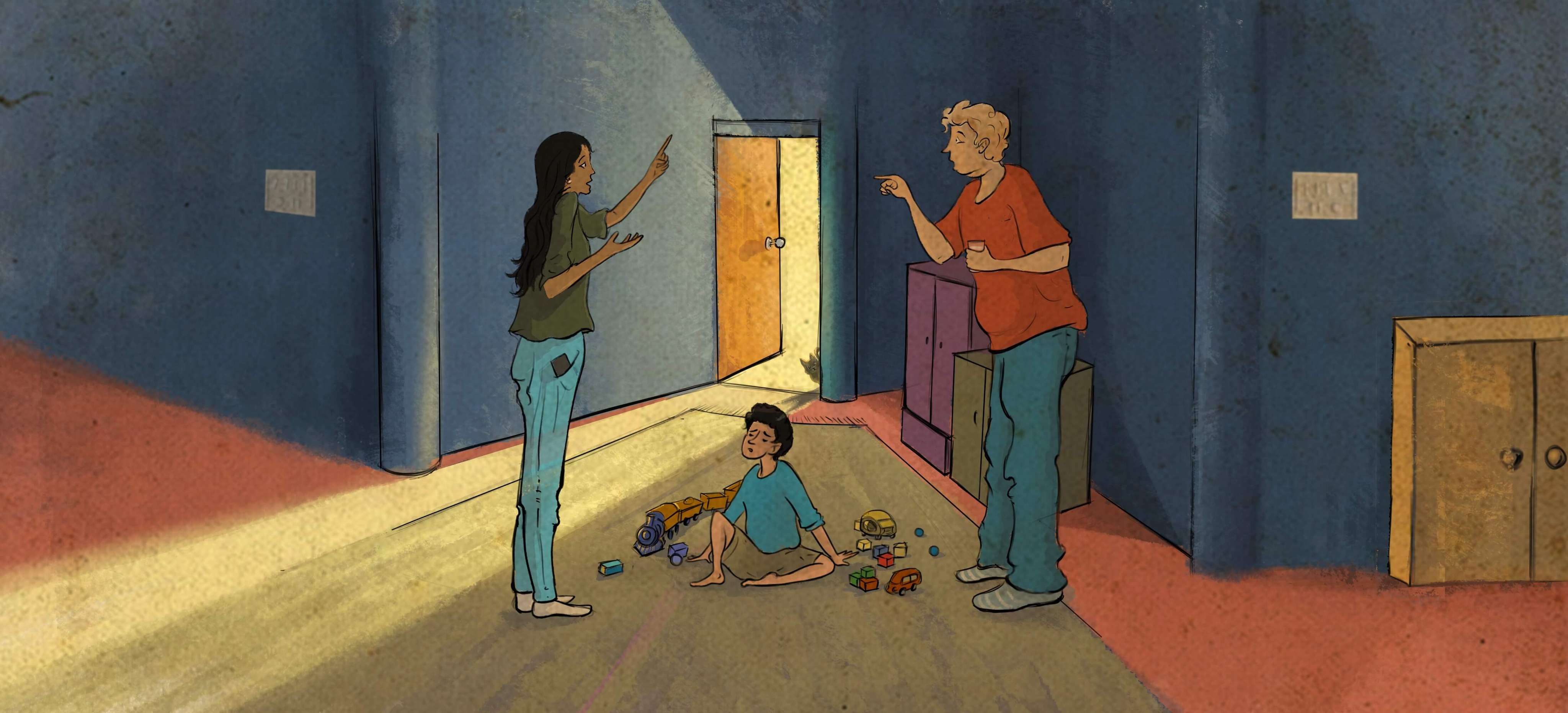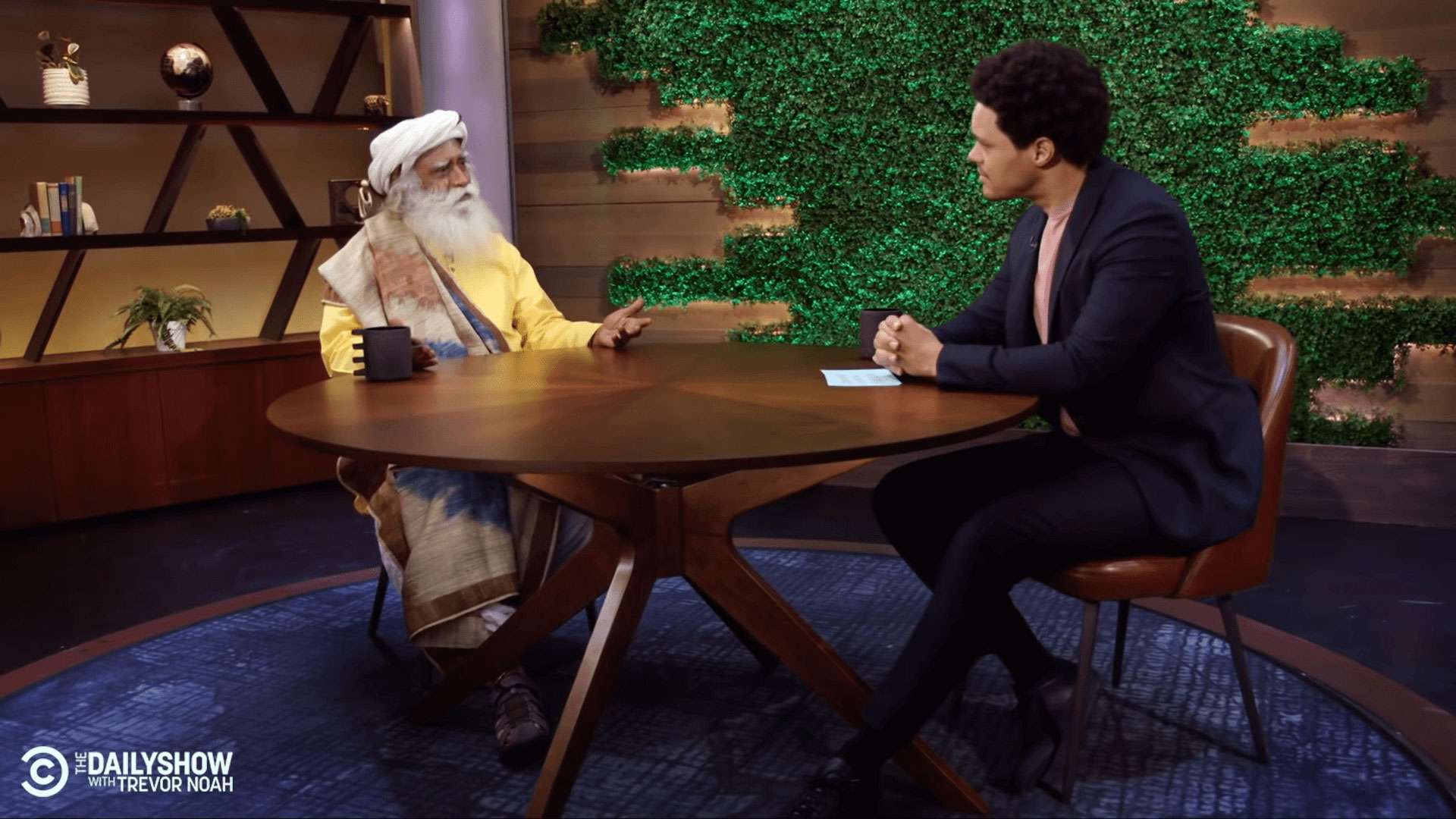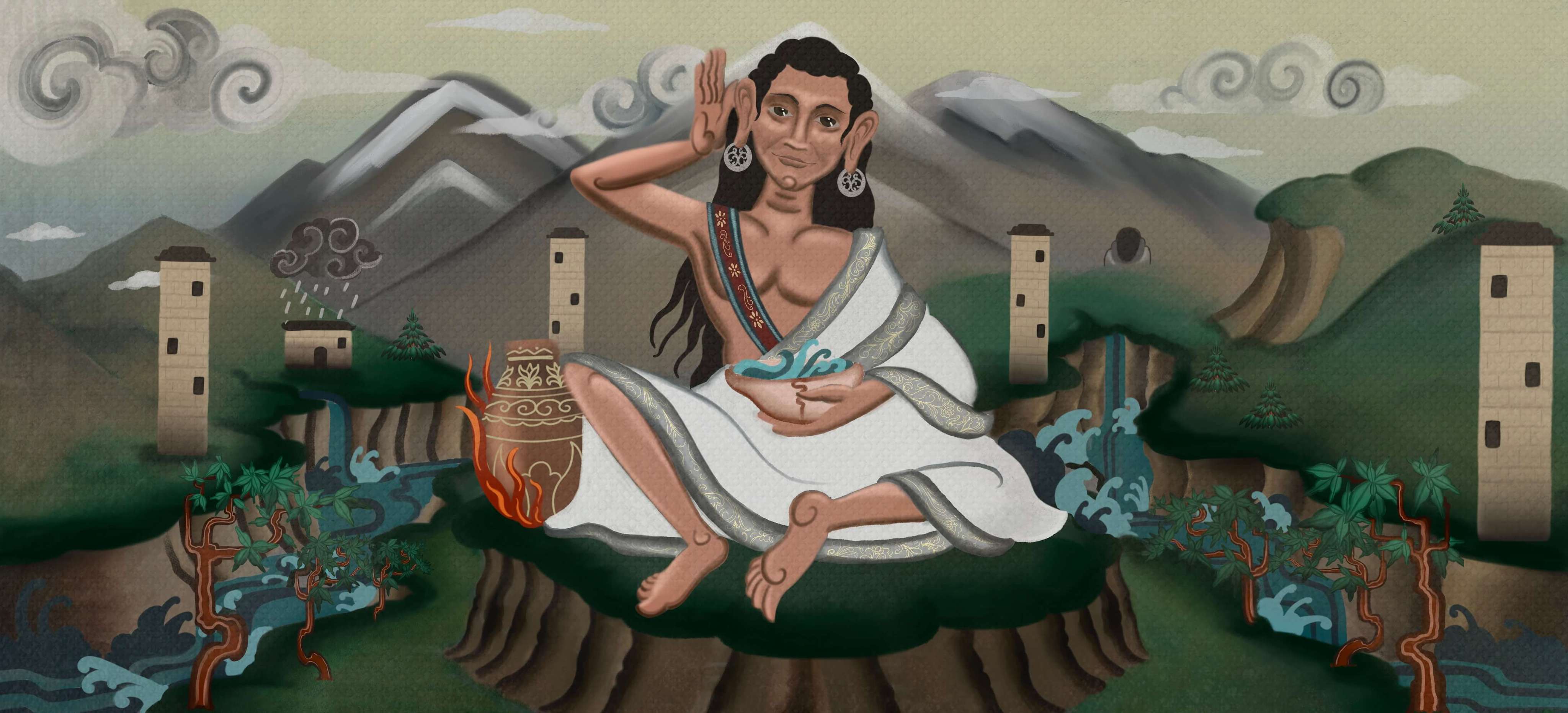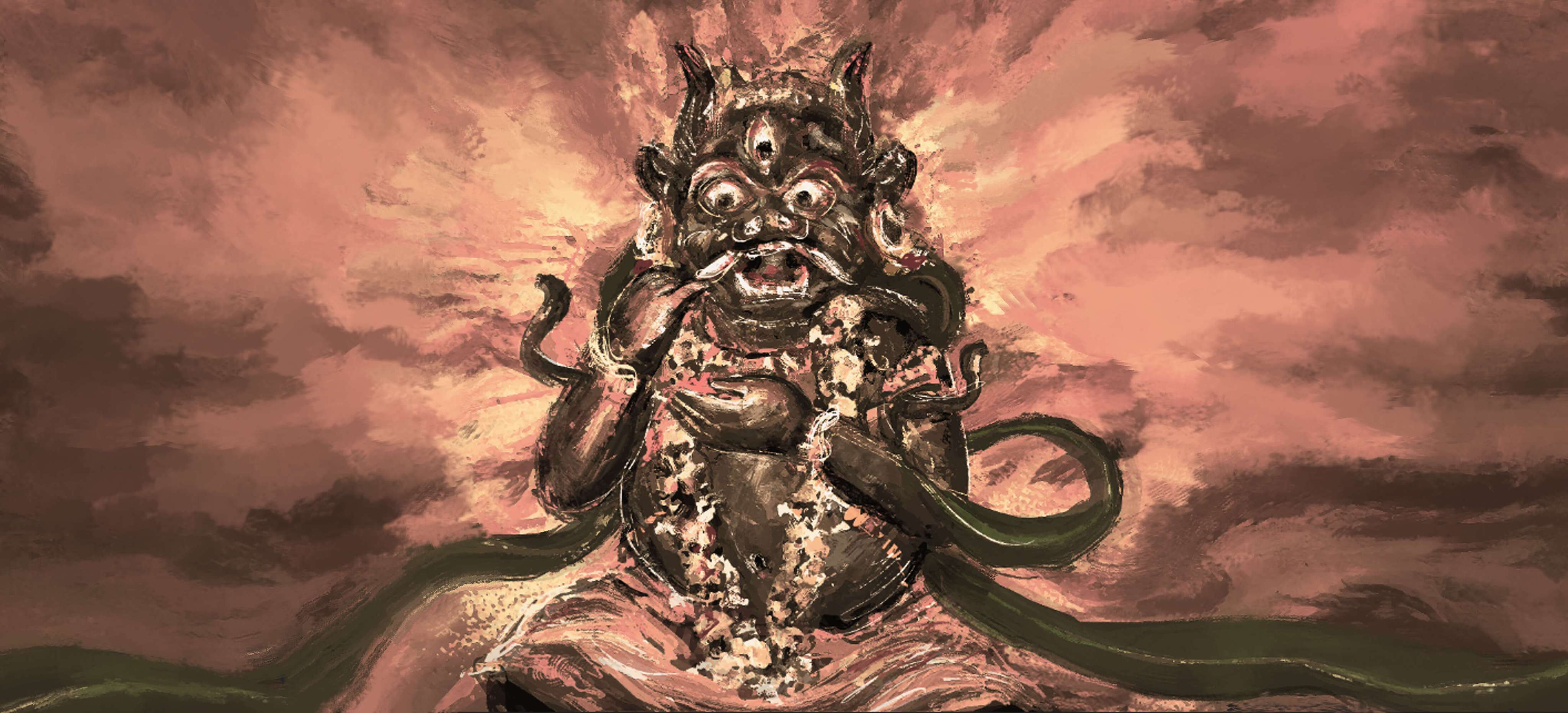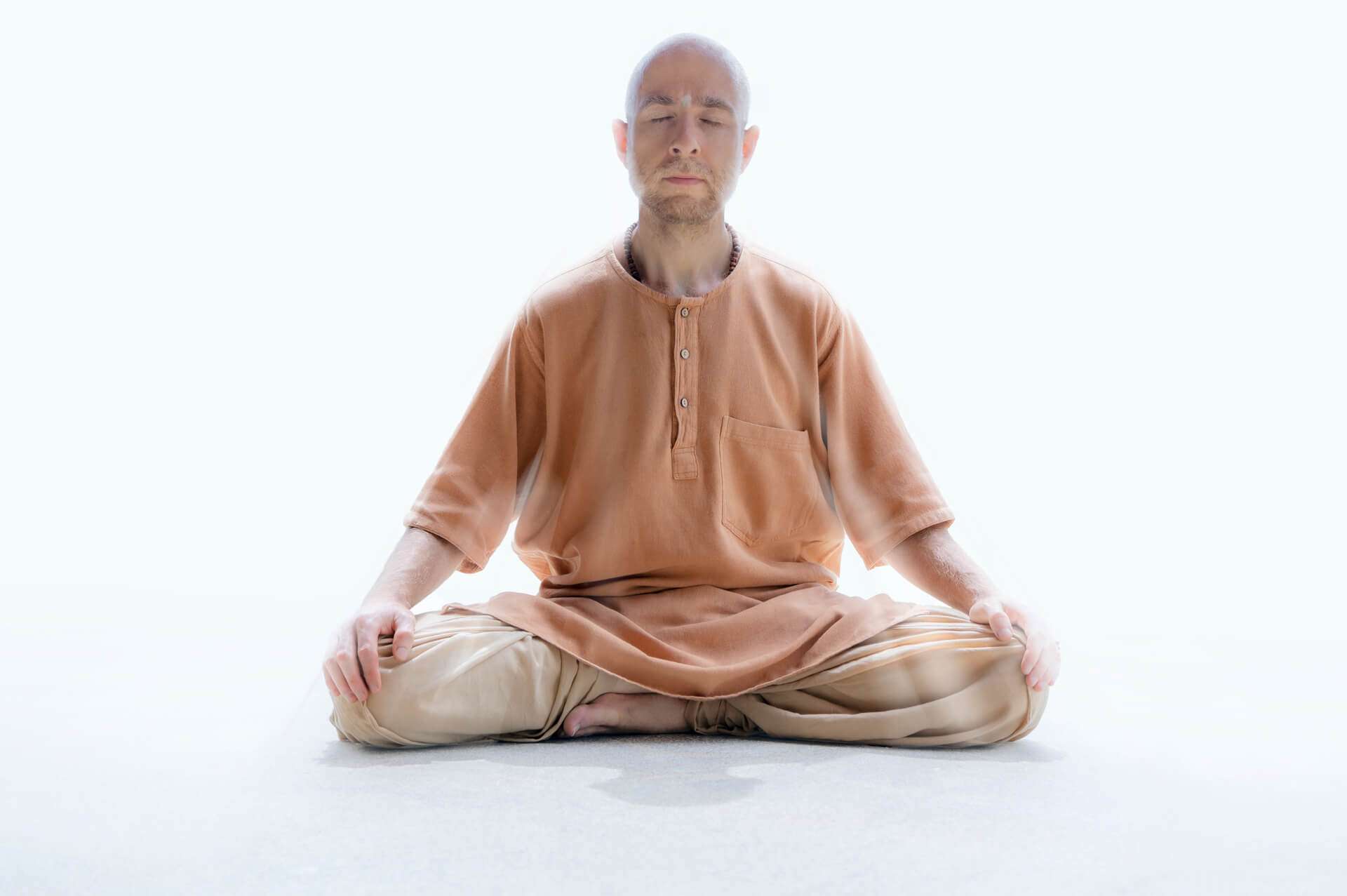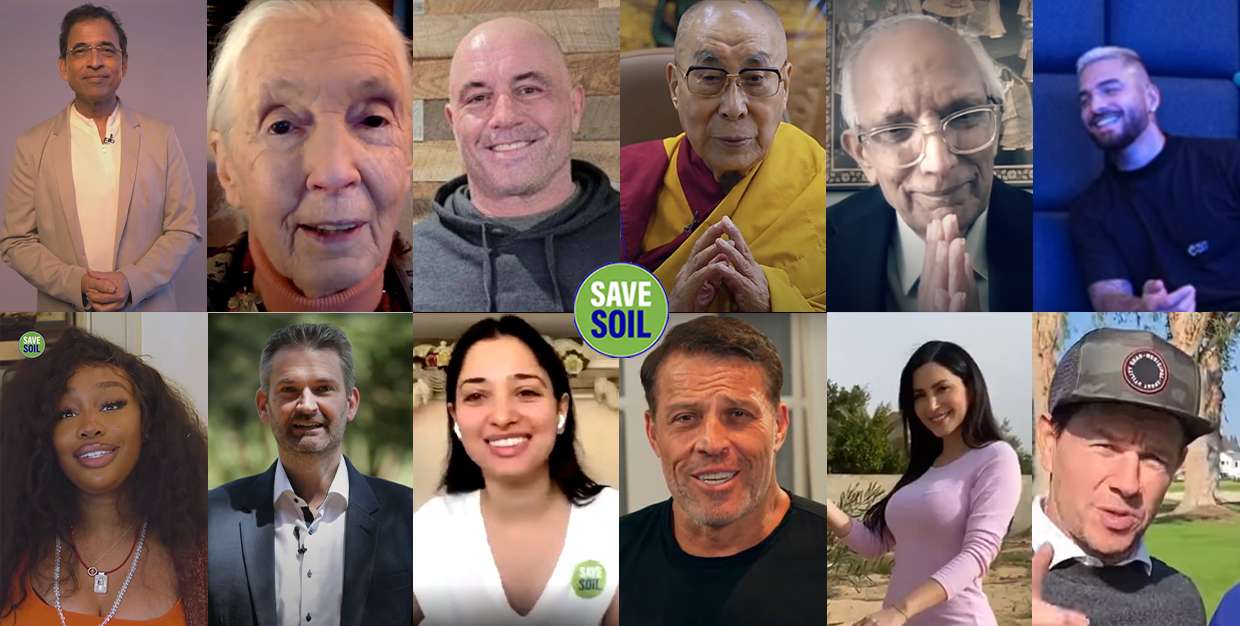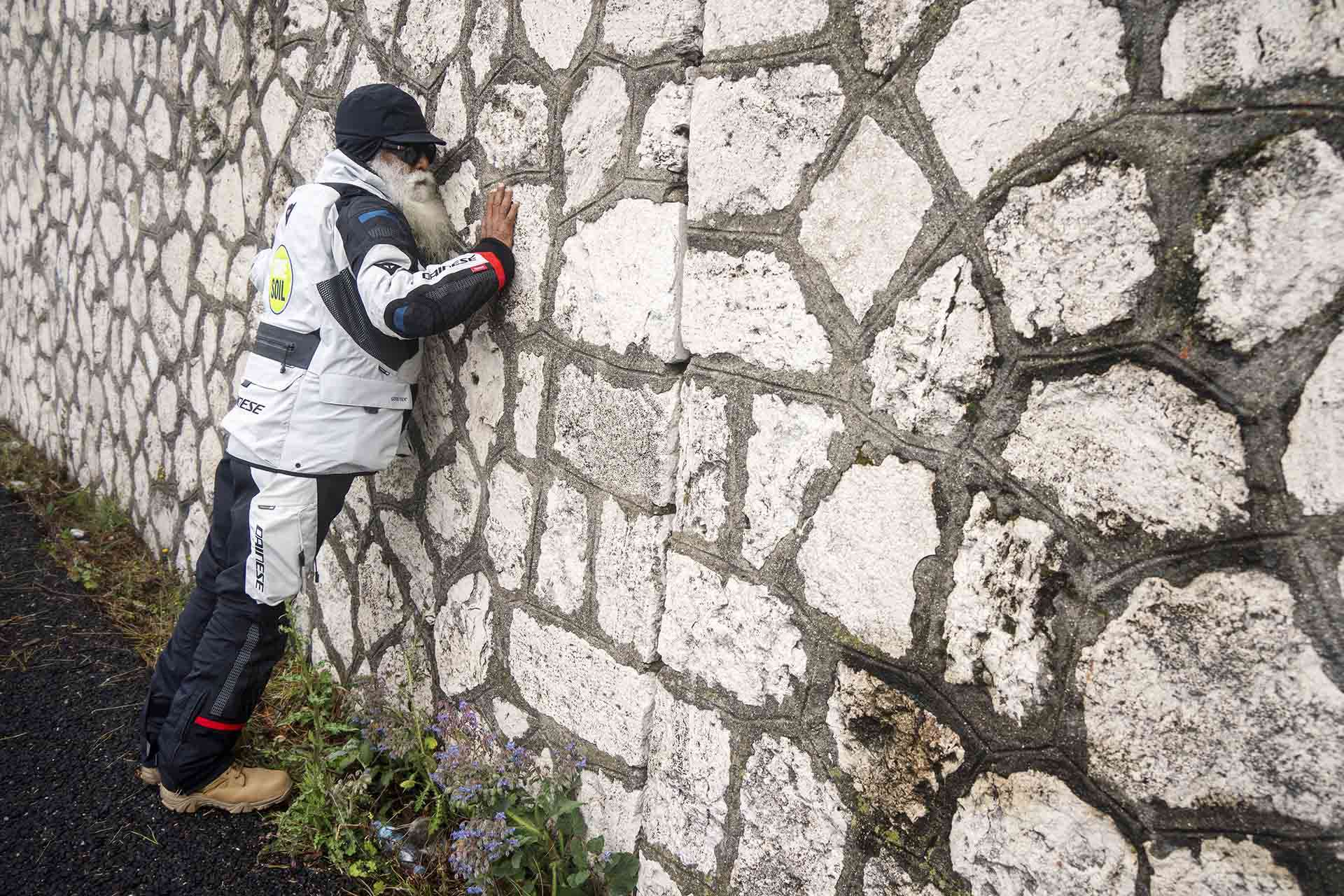In this series, Isha brahmacharis and sanyasis share their individual background, observations, and experiences of what it means for them to walk this sacred “Path of the Divine.”
The Longing to Know
When I was sixteen, my father died of cancer. I still remember that morning when my mother came to my bedside and gently told me, “Last night your father passed away.” I didn’t say anything; I was just numb. We all knew it was coming – he had asked to be moved back home from the hospital just a few days earlier. But when the moment came, my world shattered. Sadhguru has often said, “Only when suffering comes in one’s life, that’s when most people seek spirituality,” and it was only many years later that I realized this event was the trigger for my own seeking.
From around that period onwards, I became fascinated with the “paranormal.” I would spend my weekends going around esoteric bookstores in London. Through this I ended up reading about Yoga. Until that point, I had always thought that Yoga was nothing but some kind of gymnastic postures. I was amazed to learn that it was in fact a doorway to a different kind of knowledge – something that I had been unconsciously grasping for. From that point in my life, I was always looking for somebody from whom I could learn this real Yoga. However, as a teenager growing up in suburban England, before the internet, I was out of luck.
In 1996 I completed my school education and went to study mathematics at Nottingham University. It was there that I developed a wonder for numbers, which has remained with me since. After graduating, I found employment with an IT company. It was my “dream” job – a good salary, interesting and challenging work, and good prospects. But after a year or so, I noticed something deeper within me was not being settled. The work didn’t seem to have any meaning for me. “This is not it,” I thought to myself.
Around that time, I was asked to relocate to the firm’s London office. After getting settled, the first thing I did was look for somewhere I could learn Yoga. That’s when I found the Sivananda Center. This was the first taste I had of something that felt authentic. When I attended the first “Beginners Yoga” class, the teacher asked all of us why we had come. Each person was saying things like they wanted to get rid of their backache or improve their concentration. When my turn came, a little embarrassed, I confessed to the class that I wanted to get enlightened.
After a few months of regular Yoga classes, and reading whatever books I could find – including Paramahansa Yogananda’s “Autobiography of a Yogi,” I had a strong urge to travel to India. Although the imagery of sadhus and temples had religious connotations for me that I found difficult to accept, I was intrigued to know more about the mystical, and I started planning how to take leave from my work.
One day I was talking with an Indian friend, and I mentioned to him that I was planning to go to India for a month. He responded, “How can you go for just one month! India means you need to go for at least six months.” Somehow, I just accepted this as an indisputable fact, and when I got home, I checked what options were available for taking an extended leave from my job. As I was fairly new, I didn’t qualify for any of them, so I reasoned the only option would be to resign.
The following day, I walked into the office of our division head and announced that I wanted to leave. He was taken aback and asked why – when everything is going well. I said, “I want to go to India for six months.” He asked, “What are you going to do there?” At that point, I realized I didn’t have a logically reasonable answer, and replied that I didn’t really know.
Looking puzzled but somehow understanding, he told me to go ahead and not to worry; the job would still be there for me when I returned.
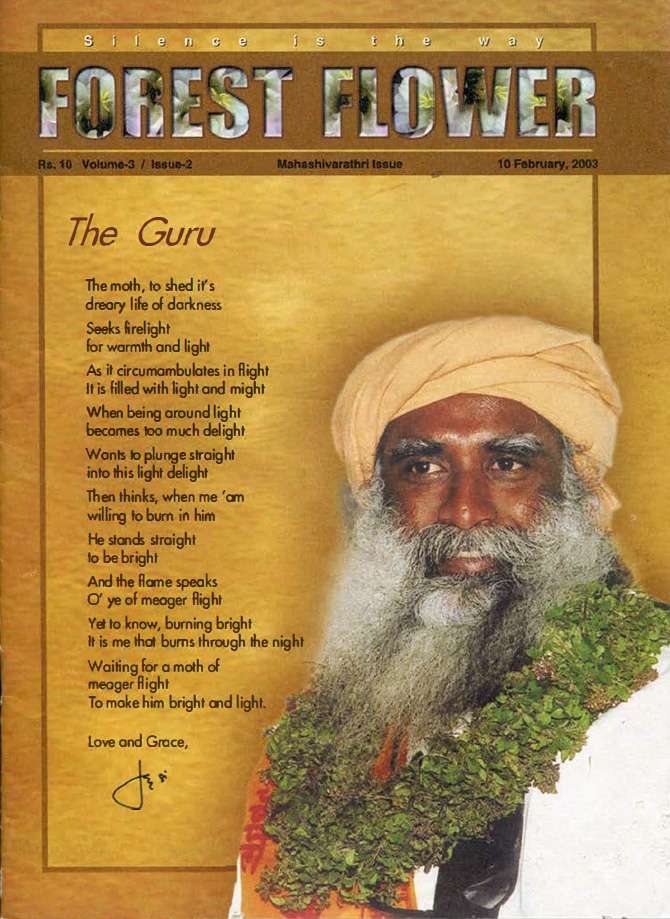
Mystic’s Messenger
Soon enough, the time came for me to leave. It was March 2003. My flight stopped in Sri Lanka for a night, and then delivered me to Trivandrum, Kerala. I left the airport and took an auto rickshaw to the bus station. I remember being overwhelmed by so many different sounds and colors that hit me as we sped down the road past the small roadside shops and vegetable vendors.
I found my bus and boarded it, and it took me to Neyyar Dam – the location of the Sivananda main ashram, where I had planned to do a month-long Yoga program. As soon as I got down, a young man and woman, who had been sitting on the seats behind me, also got down. Without saying a word, they took my bags from me, and the three of us started walking up the road together.
They were Tamilians and couldn’t speak much English, but we somehow managed some basic conversation. The young woman seemed to have a different kind of quality about her. She seemed to recognize my seeking. She was staying in the ashram ostensibly to do the same program, but in reality – I later learned – to escape some difficult family situations.
Over the next few weeks, we became friends. After the program finished, she told me that I must meet “Jaggi,” her Guru, and insisted I do the Isha Yoga class. I was thoroughly confused. I didn’t know whether I should go or not. I was happy being at the Sivananda ashram, and I didn’t see the need to go to another place, but something within me was telling me I had to go. I wrestled with it in my mind for some time, but when I just closed my eyes and kept my mind aside, I knew I had to do what she said.
She gave me a Forest Flower magazine and arranged for me to do the next English 13-day Isha Yoga class in Chennai. I was absorbed by the magazine, and the image of Sadhguru, and something within me trembled at the thought of meeting this man. I remember reading a passage where he said,
“Your meditation is not only about yourself. If a few people in this hall become truly meditative, the whole town, without knowing why, will become peaceful... I’m always looking for those people...out of a thousand people who come, there may be a dozen who are capable of higher possibilities.”
“Could I be one of those lucky few?” I longed.
I traveled to Chennai to attend the class. After the introduction session, I had no doubt that this was my path, and the thirteen days just flew by. Till now, I have such fond memories of that class – the magical ambience, the volunteers who silently and lovingly took care of every detail, and the teacher who seemed to radiate the same kind of quality as the young Tamil woman who introduced me.
After the class was over, I came to the ashram and remained here as a volunteer for the next five months, losing myself in the seva and the beautiful surroundings. I forgot about my original plan to travel through India visiting different ashrams and spiritual places. I had found what I was looking for without even having to search for it.
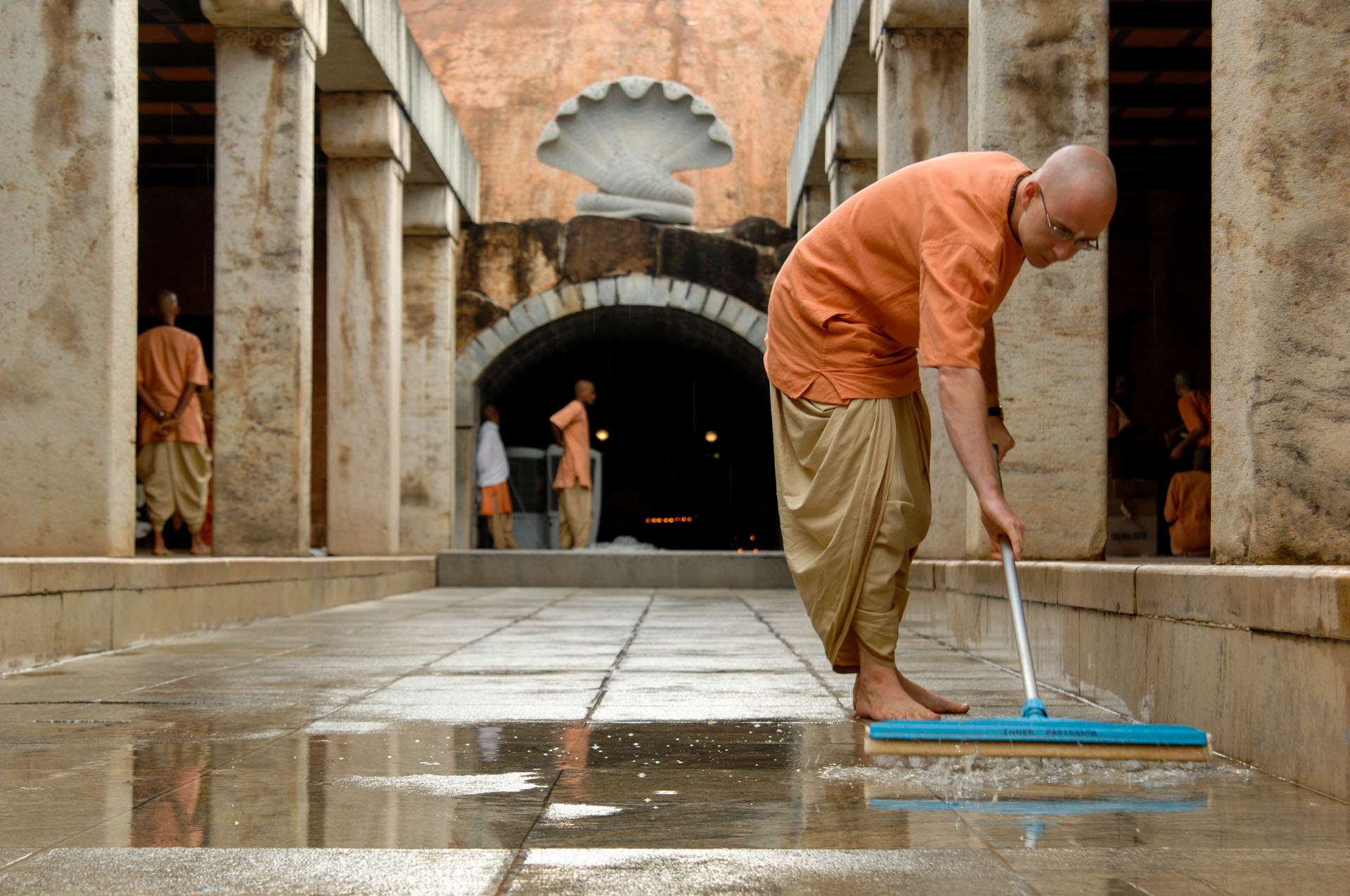
Not my Home
Garlands finely strung adorn
This is not my home
Peacocks strut without concern
No, this is not my home
Stone cut with uneven hew
This is not my home
Mountains Graced by men who knew
Oh, this is not my home
My home, I know not where it is
Nor which direction it lies
But here, pray may I stop a while
My home that I may find

Encountering the Enlightened
While I had been in the ashram, Sadhguru had been in the United States, and towards the end of my stay, he returned and was to conduct a Wholeness program. I eagerly registered, anxious to spend some time in his proximity, convincing my mother to attend as well. On the closing day, some of us wanted to go and meet him. We went one by one. With everybody else, he was joking and smiling, but when I went to him, he had no smile.
“Can I be here for some more time?” I asked him, not knowing what else to ask – as I had gone blank standing in front of him. “If you’re lazy, we’ll kick you out,” he said dismissively, and that was it. Shocked, I went back. After reading Paramahansa Yogananda’s romantic narration of his first encounter with his Guru, I had similar expectations for my meeting with Sadhguru. I thought he would welcome me with open arms, rejoicing that I had come! I didn’t know what to make of this response. I had been breaking my back washing vessels in the kitchen for the last five months, and doing my sadhana twice a day – I couldn’t understand why he had said that to me. I was confused, crestfallen, and indignant, all at the same time.
After a few days, I felt that I didn’t want to be in the ashram anymore. About a week before I was due to return to England, I was washing my clothes on a stone, wondering how I would get through the next few days. As I walked back through the Triangle Block (where all the volunteers used to stay), a volunteer cheerily called out to me, “You have an appointment!” I said, “I’m fine, I don’t need to see a doctor.” “No, no, with Sadhguru!” she laughed. I was so excited that He finally wanted to see me – or so I thought! (I later found out that one of the sanyasis had arranged the appointment for me, knowing that I was due to leave in a few days.)
I was nervously standing by a bush in the garden outside the Shrine waiting for my turn. At that moment, I decided I would ask Him what I should do with my life, and whatever – whatever – he tells me to do, I will do. After some time, a Maa beckoned for me to go inside. I could hardly believe I was getting another opportunity to meet Sadhguru face to face. “What should I do with my life?” I asked my pre-rehearsed question after he made me comfortable with some casual remarks. “Live it!” he said with a roaring laugh. Yet again, I received a totally unexpected response from Sadhguru.
Here I was, handing over my life choices to him, and (in my perception), he’s just laughing it off. I admitted to him that I didn’t like being in the ashram any more. He looked at me and asked, “Do you feel threatened?” Again I was confused. Before the meeting ended, he asked me to participate in the upcoming Bhava Spandana program (BSP) in the United States, “Then we will see,” he said. After the meeting, I was overjoyed! All my earlier negativity had just evaporated after being in His presence.
I followed the instructions, and after attending the BSP in the US, I returned to England to officially leave my job and meet some friends and family for what – I somewhere felt – might be the last time. I headed straight back to the ashram, happening to arrive on the 21st of September amidst the Isha Fest celebrations. From that point, things moved very quickly, and after nine months – on Guru Purnima 2004 – I was initiated into the path of Brahmacharya alongside around twenty-five other full-time volunteers.
Sounds of Isha
Music has always been a significant part of my life. I started learning to play guitar when I was eleven. I had an inspirational teacher – a young man who lived mostly in a shed at the end of his parents’ garden because his electric guitar was too loud to be allowed in the house. He was devoted to his instrument, and his passion ignited something in me. Every day, as soon as I came home from school, I would go straight to my bedroom and practice for hours at a time. My teacher always pushed me to never be comfortable with wherever I was, and without realizing it, my playing improved quickly. Looking back, I can see the same aspect in the path of Brahmacharya – Sadhguru never allowing us to settle with who we are, or what we are doing.
Towards the end of my school years, I got together with a singer – a close friend of mine, to form a music band. We called ourselves “Iguana,” and over the next few years, we wrote a number of songs together. We had a small following of friends, and we used to play in bars, pubs, streets, subways – wherever we could find an audience. Like all such youths, we had a dream of becoming famous one day, with thousands of people coming to our concerts! One day the thought struck me that maybe being famous was not really a great thing – and that it might even be quite troublesome. My aspiration was to make music that millions would enjoy, but I wondered if it could be done in a different kind of context. I could never have imagined how this would manifest a few years later.
Wherever I went, I always took my guitar with me – I wouldn’t want to be without it even for a day. But when I was packing to leave for India, probably influenced by too many spiritual books, I looked at my attachment, and decided I must leave it behind. In fact, I really didn’t miss it as my new journey unfolded, especially after the Isha class, and being in the ashram – but somehow it found me. One day I saw a guitar lying on one of the stone benches in the Triangle Block – probably one of the overseas meditators had brought it. I picked it up and started to play. A Swami saw me and asked me to offer Nada Aradhana in the Dhyanalinga, and also to meet the ashram music team. That’s when I became a part of Sounds of Isha.
My experience of being a part of Sounds of Isha was mostly being in a state of confusion because we never quite knew what we were supposed to do. Except for certain situations, Sadhguru wouldn’t usually give us explicit instructions on how the music should be – rather his guidance would be more in terms of what kind of ambience or feeling was needed for a given situation. This meant it was mostly left to our own understanding on how to create that, and Sadhguru would allow us to find our way. We would usually play a short piece of music before He speaks at any event, giving a chance for the audience to settle down. He would sometimes give an enigmatic glance or chuckle after we finished, leaving us uncertain and wondering whether what we played was appropriate or not.
We would play at most of Sadhguru’s programs and events – before the sessions, in the breaks, during the breakfasts, lunches, and dinners, to wake people up, make them dance, or make them sit quietly – anytime Sadhguru wasn’t speaking, really. Whenever Sadhguru is there, he will always notice the music. Even when he is sitting at the table interacting with people over dinner, it will be such a joy for us to see his foot or his hand tapping to the rhythm. Sometimes we’ll be playing dinner music non-stop for several hours at a stretch, and can’t stop because people are dancing or enjoying themselves. Invariably Sadhguru will come himself or will send a message through someone – “Tell the boys to go and eat.” This care and concern for everybody around him at all times is what sets him apart.
We are a group of people coming from different cultures, each with their own ideas about music, and each with different levels of training, but we were placed in situations where we had to produce something together. At first it seemed hopeless for me to play along with the subtle complexities of the Indian ragas, and the unfamiliar five and seven beat drum rhythms, but somehow things would just happen. I realized over the years that we would always start composing in confusion, and slowly yet suddenly something else would come out of nowhere – and nobody would quite know how it happened. This experience has happened many times, and I now know this is part of what it means to be immersed in the Guru’s Grace on a daily basis.
One time, Sadhguru suggested that I learn the sitar. A Delhi meditator donated an unused sitar to us, and I took a few lessons to learn something formally. The sound of the instrument was mesmerizing, and I was deeply drawn to the structure, depth, and beauty of Indian music, which seemed like the perfect intersection of art and mathematics. Although I don’t know how to play properly, I can manage to get a good sound from it mostly because of my earlier guitar practice, and I now offer Nada Aradhana with sitar once a week in the Dhyanalinga.
Sadhguru has always emphasized the significance of sounds in contrast to music. That is why he named us “Sounds of Isha,” and not “Isha Music.” I logically understood what the difference is, but I really don’t understand the full significance. However, when I hear people say Sounds of Isha is different, I know why. Sounds of Isha is not the expression of any individual. It is an expression that comes through all of us, when we manage to go beyond our own likes and understanding.

Mahabharat
In 2012, Sadhguru conducted the program “Mahabharat: Saga Nonpareil,” an exploration of “The greatest story ever told.” I was leading the music team at that time, and we had to compose the music to accompany Sadhguru’s narrative.
I assumed somebody else would be interacting with Sadhguru during the program, but somehow, it ended up being me. Every day, just fifteen minutes before the morning session, two of us would meet him in his room to help plan what he would speak that day and what music would accompany it. (Naturally, we had tried to get this information numerous times beforehand, but every time we asked, he would say he hadn’t had time to think about it yet.) So when we would enter the room, he would cheerfully (and I suspect mischievously) ask us, “What shall we talk about today!”
My mind would swim as I tried to comprehend why he was asking us what he should talk about. Now I know that he was simply including and involving us in the process, as he naturally does with the people around him in every aspect of Isha.
After maybe five or six days, I realized that we had exhausted all our songs, and there were still two days to go. I went to Sadhguru at the end of the day and in exasperation told him, “Sadhguru, we don’t have any more songs left.” I don’t know what I expected him to say, but he just gave me a look, laughed, and said, “Then, make some more!”
I got together with the team and said we have to do something. It was 10 p.m., and we would need to play a song the following morning. Though exhausted, we stayed up to compose a new song, calling a volunteer in Mumbai to write some lyrics. Always willing and inspired to help us, he too stayed up the entire night, and jointly, we managed to create a song about Shiva giving his astra to Arjuna. In the morning, when we told Sadhguru we had this song, he enthusiastically said that in the second session, he would narrate a relevant story, and would say a certain line as a cue for us to start the song, so the music would be woven into the story. He repeated the line so I would get the cue right.
After the meeting, we went straight into the hall, and the session started. It was difficult to update the rest of the team about the plan as we were all sitting on the music dais, but since the song was to be played in the second session, I thought I would update everyone during the break. It so happened in the first session itself, Sadhguru started to narrate the story about the astra. He paused at the line that was our cue to come in with the music. I heard it, but I thought, “He said he will do it in the second session; I must have got it wrong,” and kept quiet. Sadhguru repeated the line, and looked over. Again, no reaction from me, and I missed the opportunity.
Sadhguru carried on with the story, with the audience being none the wiser. Then I realized that I had missed the cue and the scenes of the team staying up all night tormented me. I was in despair thinking how stupid I had been, and how I had wasted all their efforts. At the end of the story, Sadhguru looked over at me, smiled, and said, “I think they have a song about the astra – let’s listen to them.” I felt so small and grateful to him for embracing us despite my mistake.
As destiny would have it, one day during “Mahabharat” at our morning meeting, Sadhguru said he had written a new poem called “Destiny,” and wanted to read it to us. There were only a few minutes to go before the session was to start, and we had not discussed anything about what he would talk about. “Why aren’t we planning for the session!” I thought to myself as he was reading the poem to us, without even the slightest sign of concern that we seemed to have no fixed plan for the day.
About halfway through the day, during a short break, Sadhguru called me to the dais and asked me to get the poem. He then started the Q&A session. I searched but couldn’t find his poetry book in his room, and I went back to the dais to tell him as he paused before another question. “Ask them to check in the house,” he said quickly and continued with the questions. After a few frantic minutes of several people searching, the book was finally found in his car. I found the poem, got it typed out and printed and gave it to him. “This is not the one,” he said and again continued. I realized that in my anxiety, I hadn’t paid attention to him in the morning and had found an older poem also titled “Destiny.” I quickly found the new poem and got it typed and printed.
Just as he finished answering a question, I once again took the opportunity to go up to the dais and handed the paper to him. He looked at it and nodded, and I felt a surge of relief. In the meantime, a woman had just taken the microphone to ask a question. She asked... “What is destiny?”
“Knowing the beginning and the end, you still have to play the game in the middle. Otherwise, there is no game because the game is only in the moment.” —Sadhguru, Mahabharat
Archives
Since I came to the ashram, I have also been a member of the Archives department, where amongst other things, we look after all the video footage that is shot of Sadhguru. Over the past fifteen years, we have seen the technology change significantly, with the transition from analog video tapes to digital video, and ever-increasing volumes of data. I have helped put together the systems for managing this data, and enabling it to be easily accessed by our Video Publications department.
While the digital era has empowered us to reach Sadhguru’s wisdom to the whole world at a scale which was not possible just a few years ago, this has brought with it a new set of challenges. I spend a part of my time looking at these aspects; in particular, seeing how to ensure we have the necessary understanding and mechanisms to keep up with the rapid changes in technology and media formats so we can preserve Sadhguru’s recorded words, undistorted, in a way that people will be able to access for many generations to come.

Sangha and Sadhguru
It is the highest possible privilege to be given the opportunity to walk the path of Brahmacharya as Sadhguru’s disciple. To live and work amongst people who are embodiments of responsibility and who simply and naturally place the wellbeing of others above their own is both humbling and inspiring. I bow down to the Sangha and all the Isha volunteers in and out of the ashram who have dedicated themselves to Sadhguru’s vision of bringing spirituality to the whole world.
The first time I saw Sadhguru, I just trusted him completely, and I knew he was the way for me, and the answer to humanity’s problems. Now, after being here for these many years, I can often feel his presence within me guiding me on the path. At times I wonder if I am really making any progress, as I still get caught up in my own nonsense and struggles. But I know as long as I am steadfast, he will take care of everything.
I don’t understand who or what Sadhguru really is – it is beyond our comprehension, but he is the phenomenon of our age. To be alive on this planet at the same time as him is a fortune that cannot be overstated. If I can play a small part in fulfilling his vision, then I would have lived a worthwhile life.
Before I took Brahmacharya, Sadhguru asked me if I was really sure about taking this step. I said, “Sometimes it feels like I don’t have any choice.” He smiled and replied, “You don’t have a choice, but you have to think you have.” I would say that best sums up my journey.
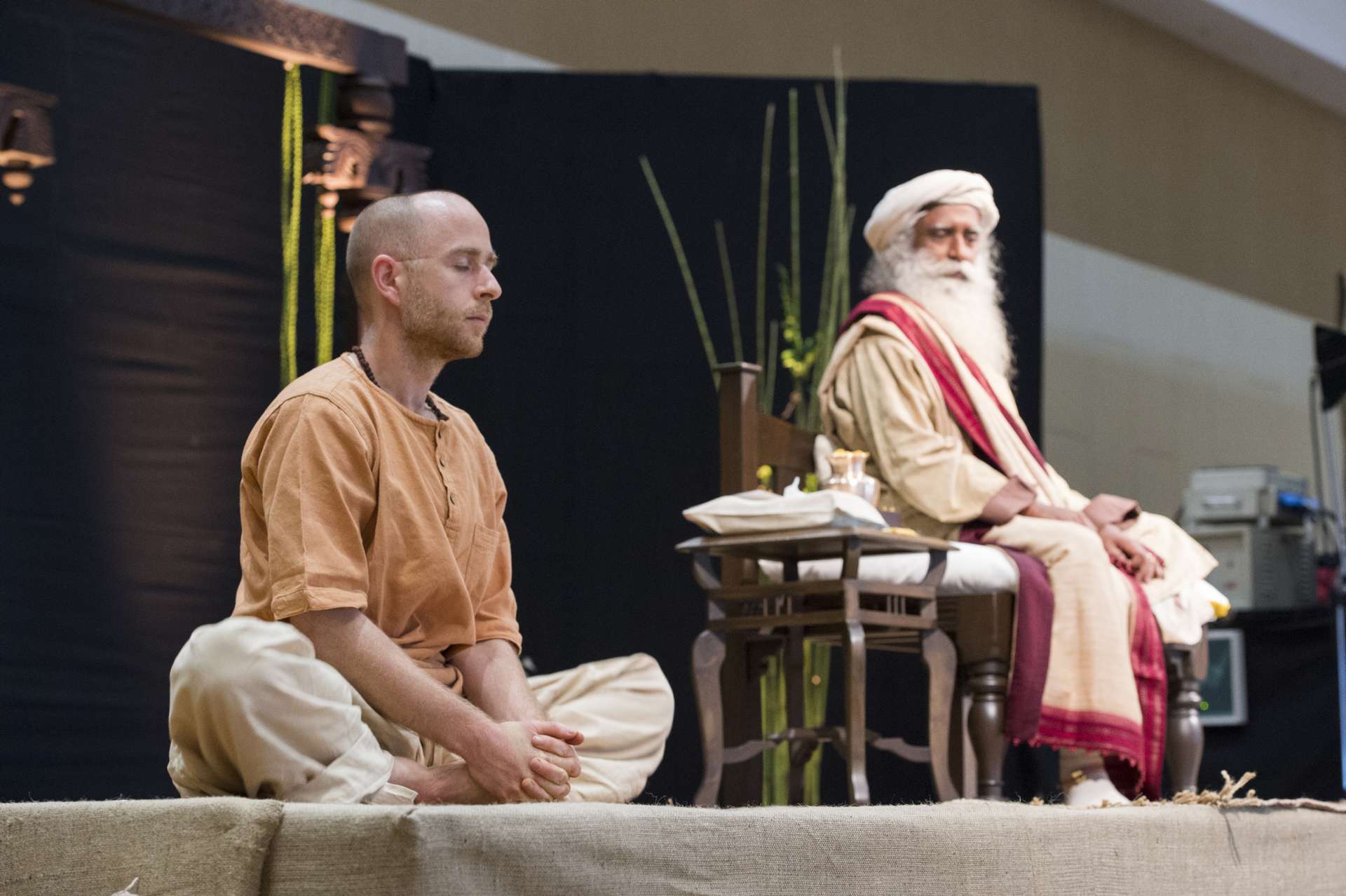
You and me
Who am I
I do not know
What are You
I have no clue
Where are we
Is only true
You in me
And I in You
